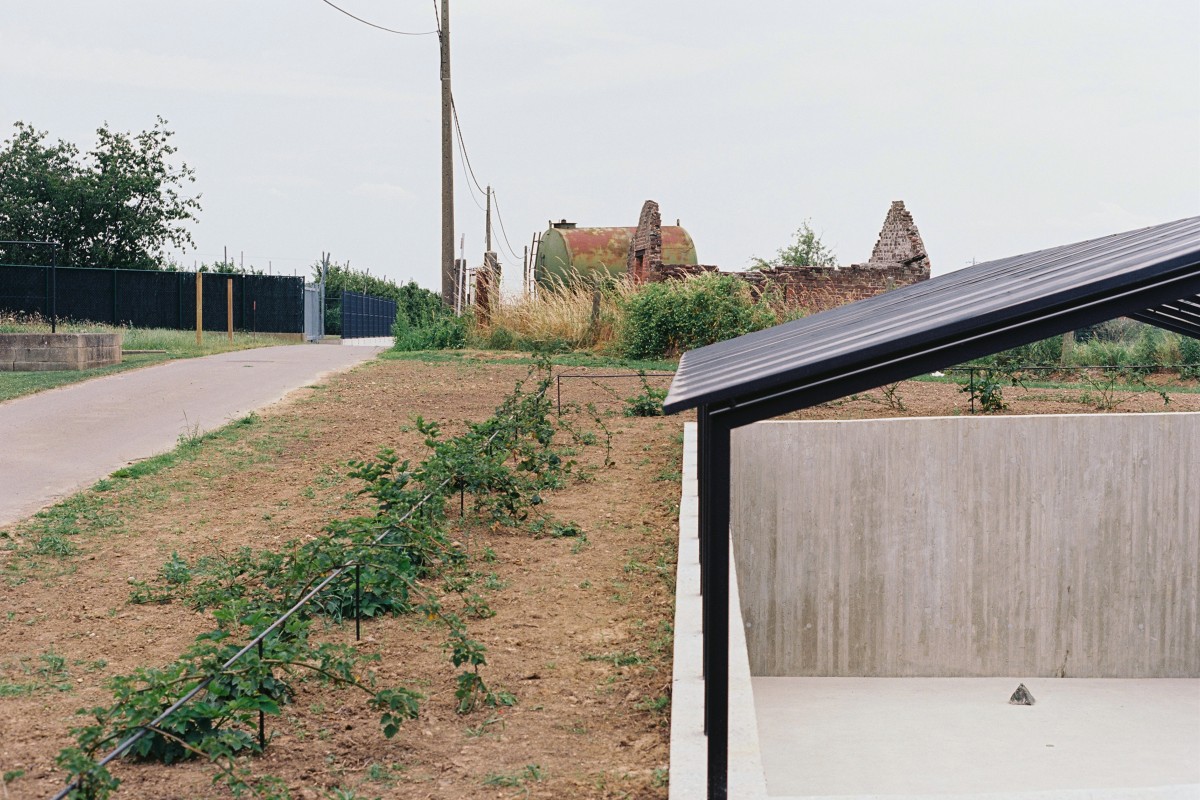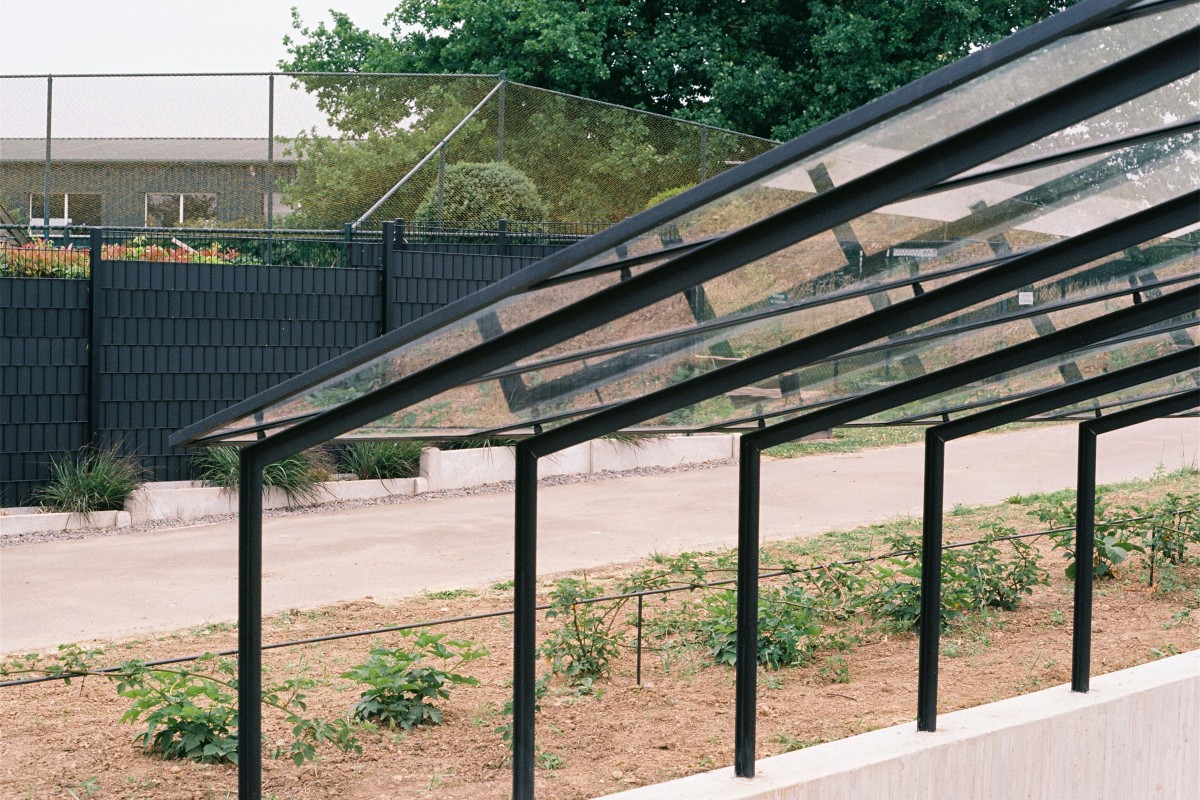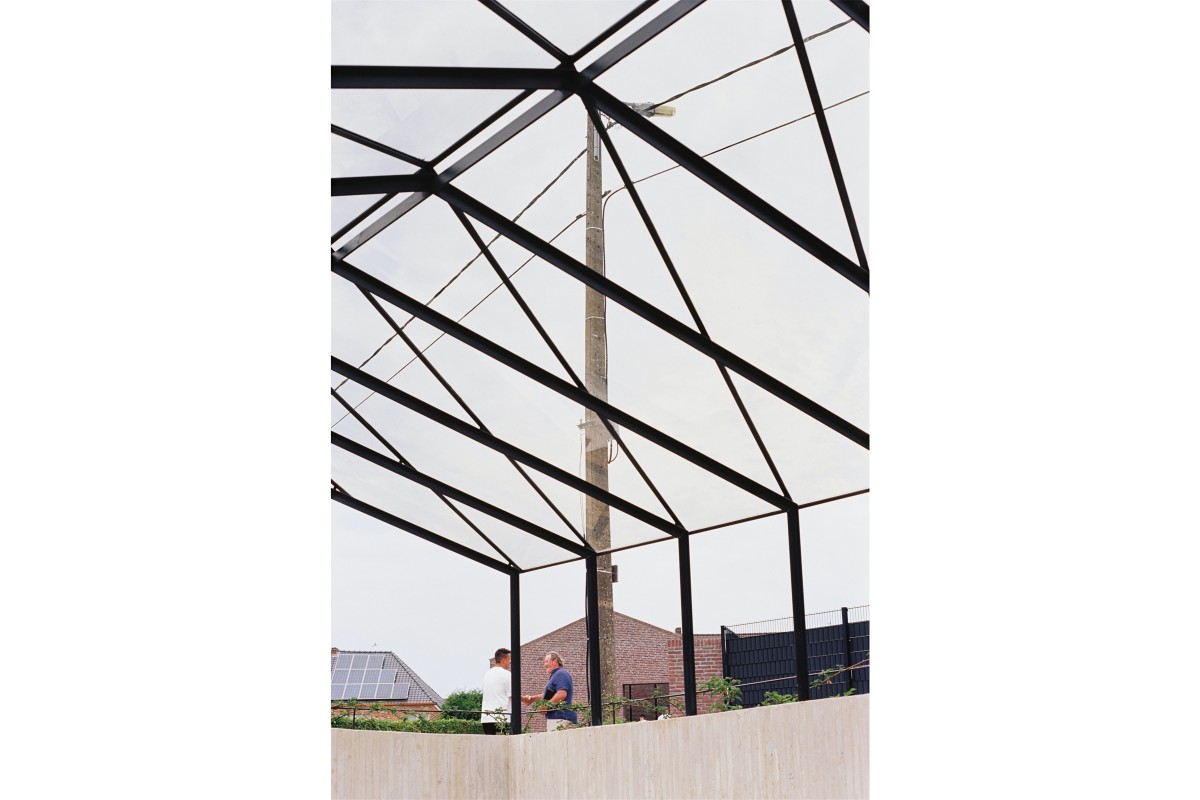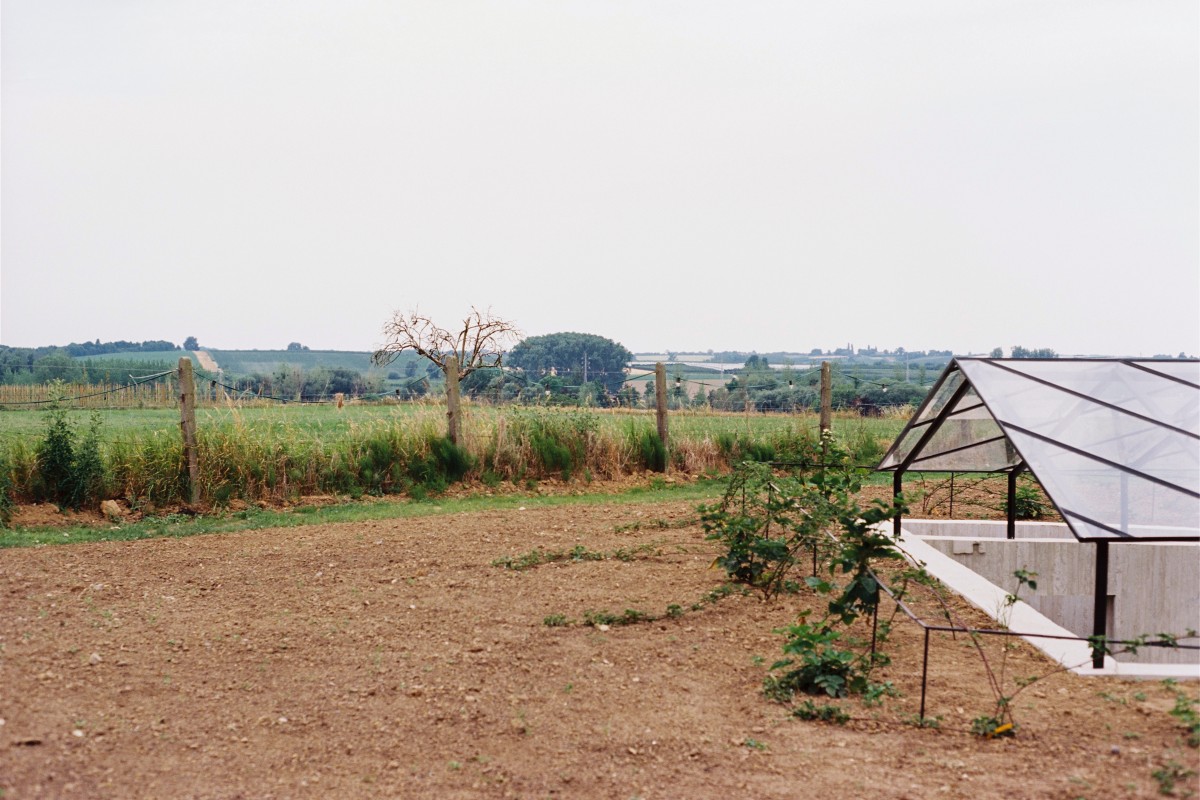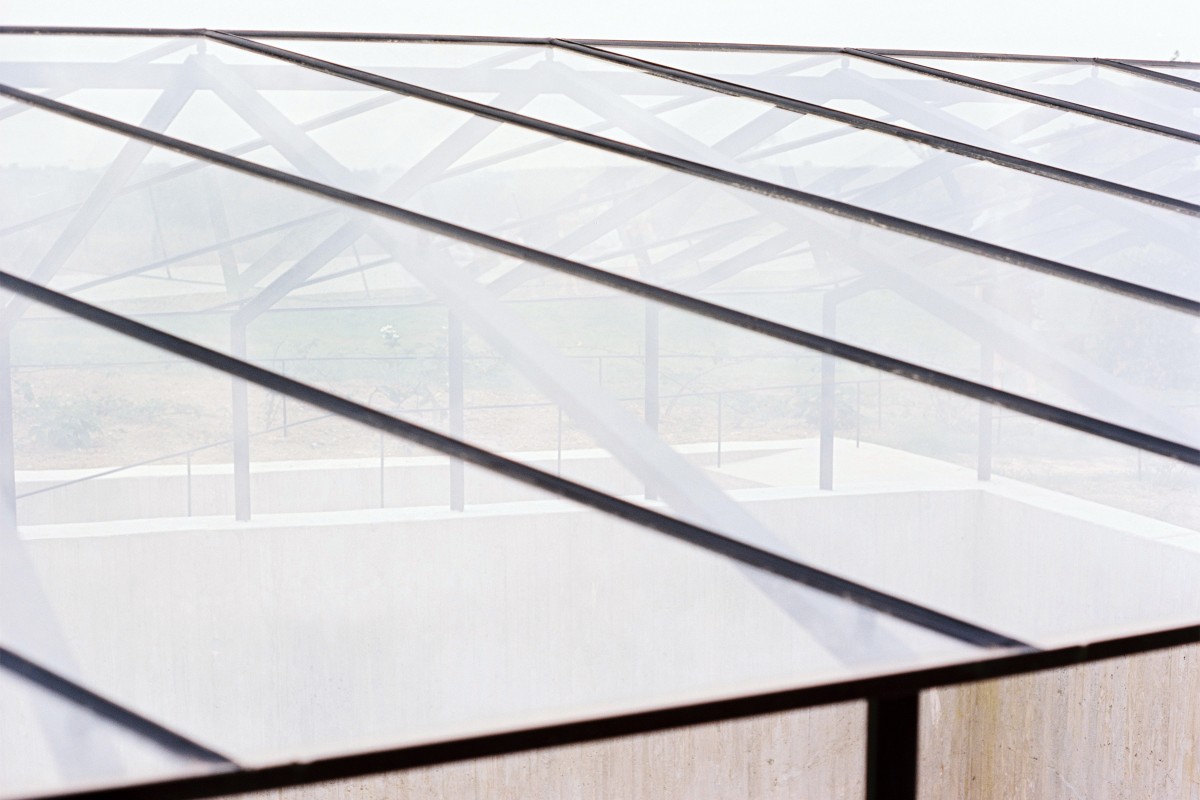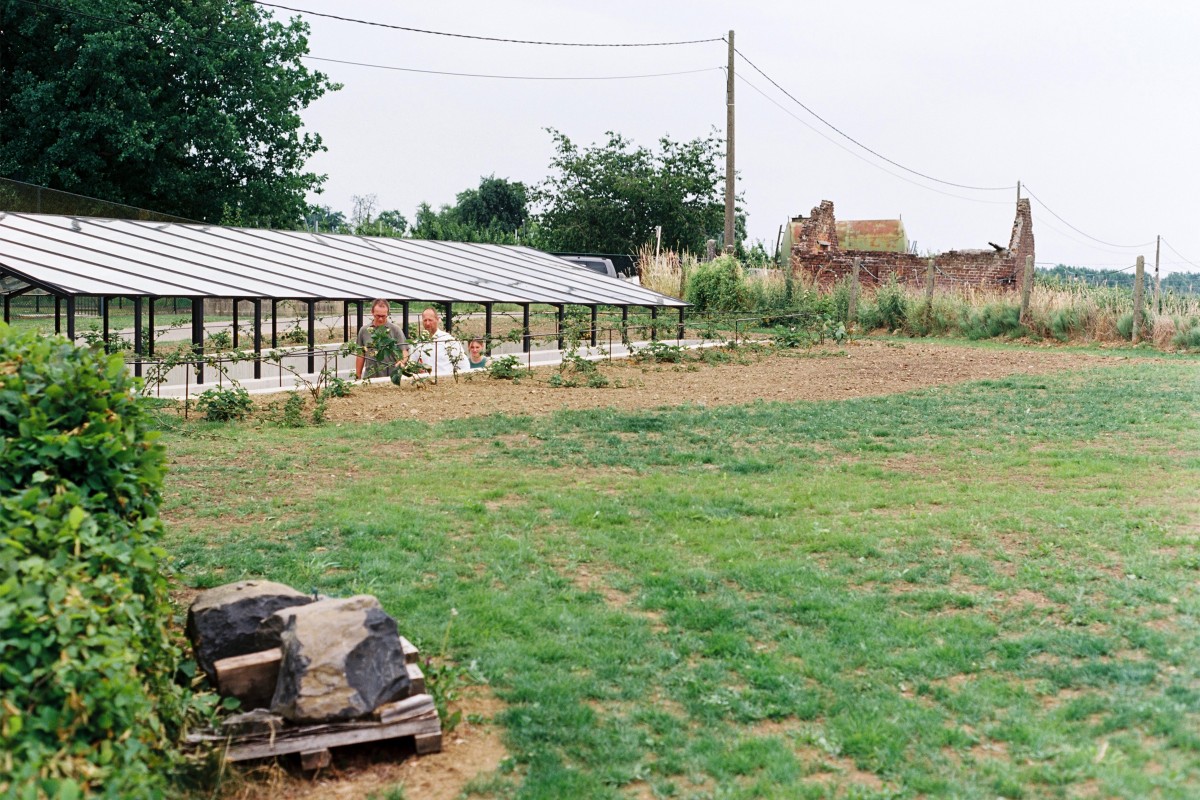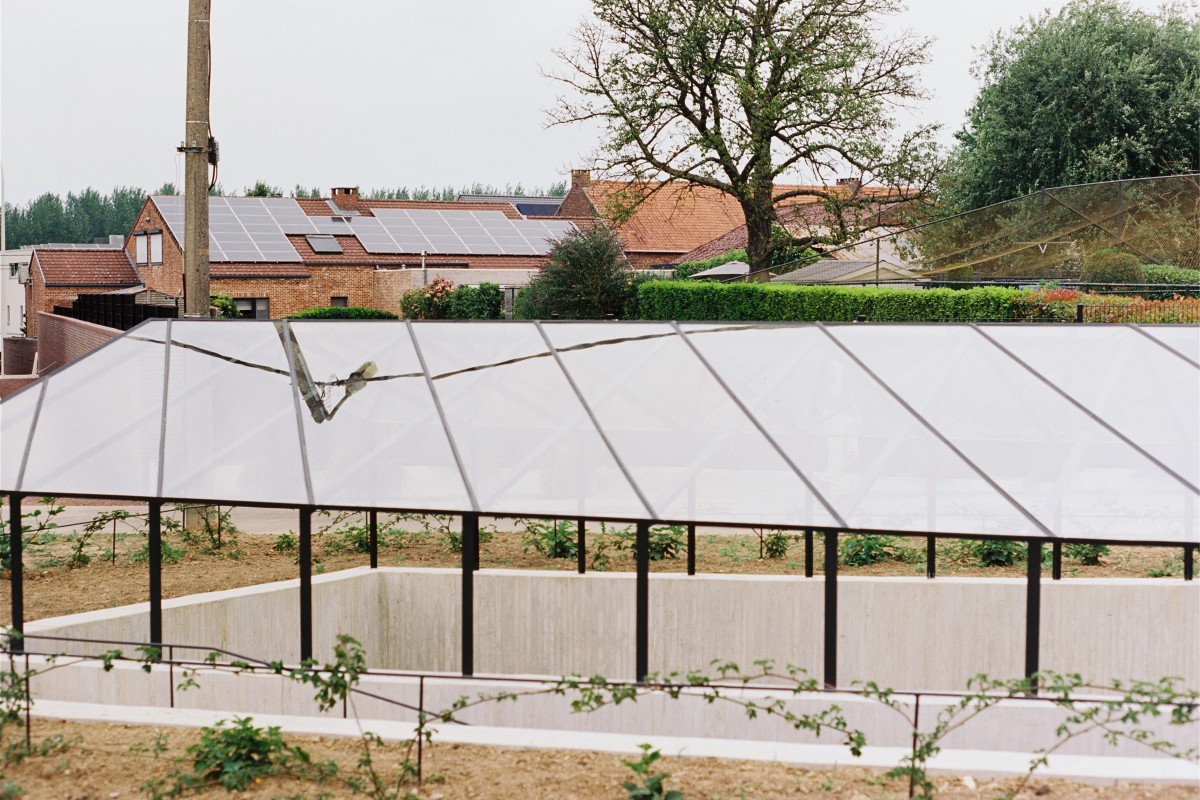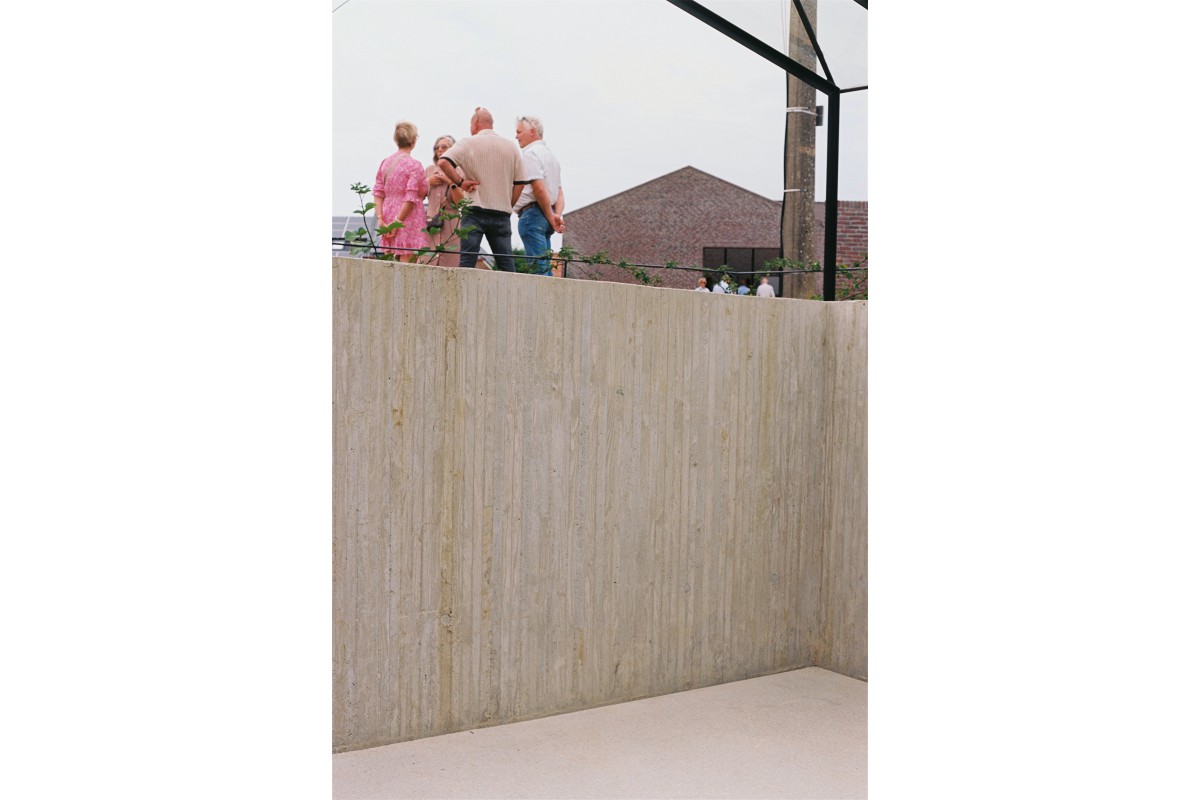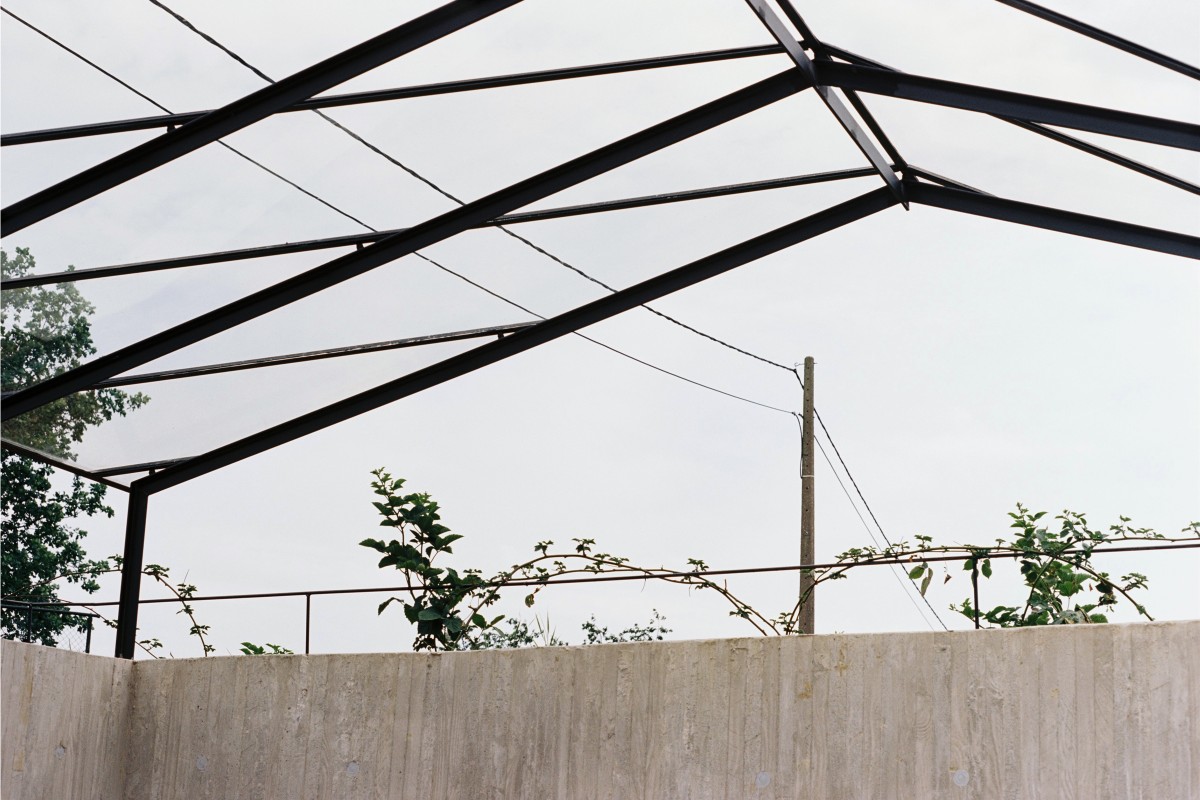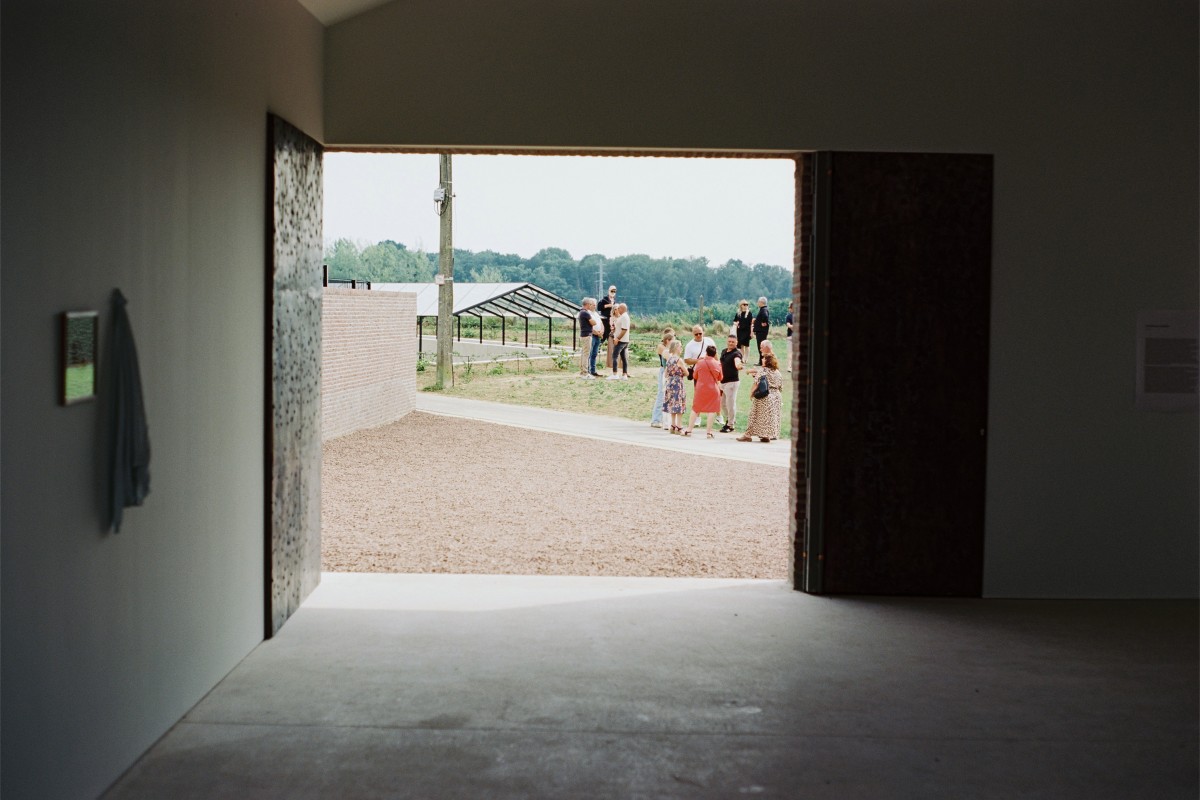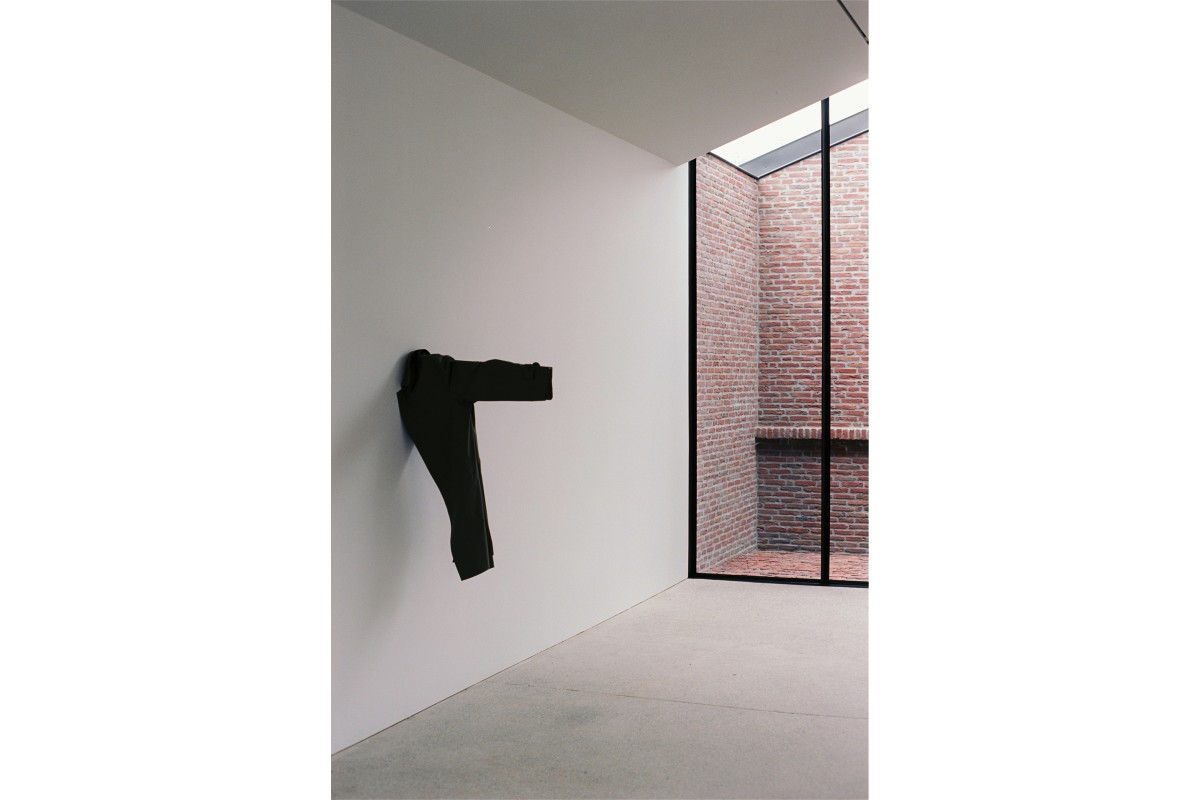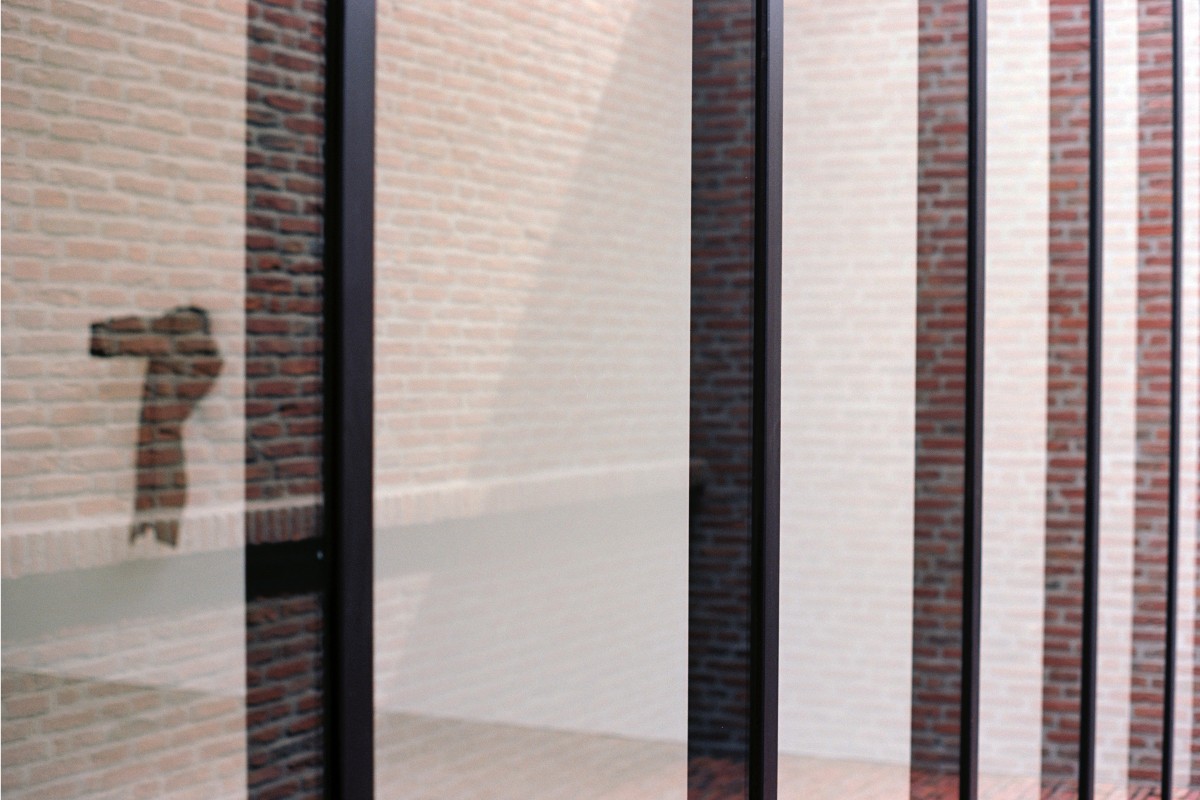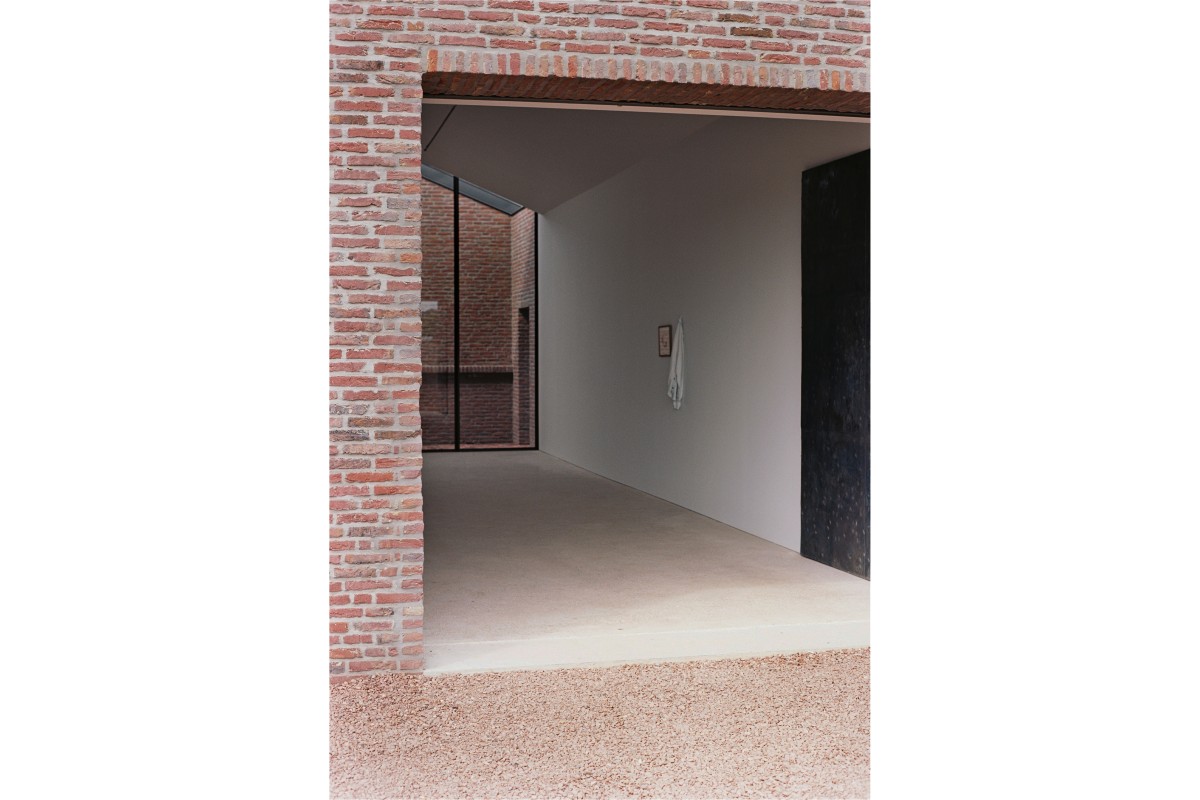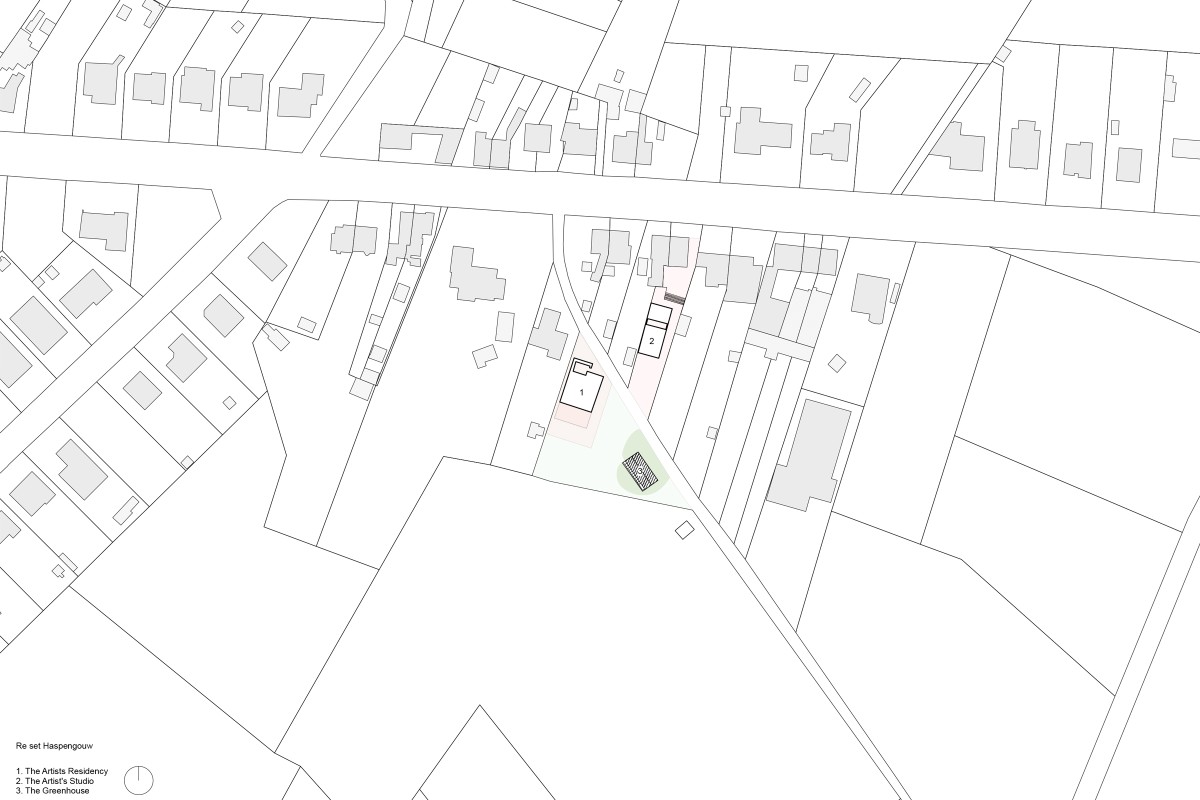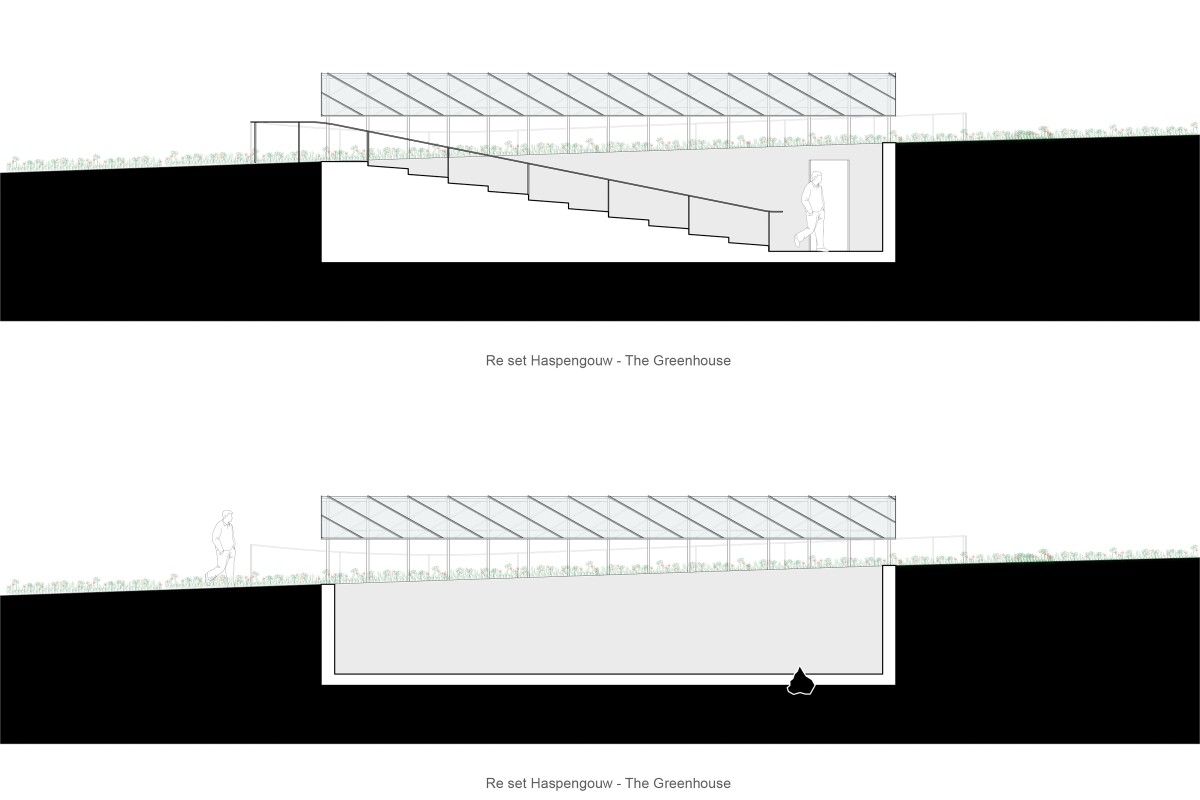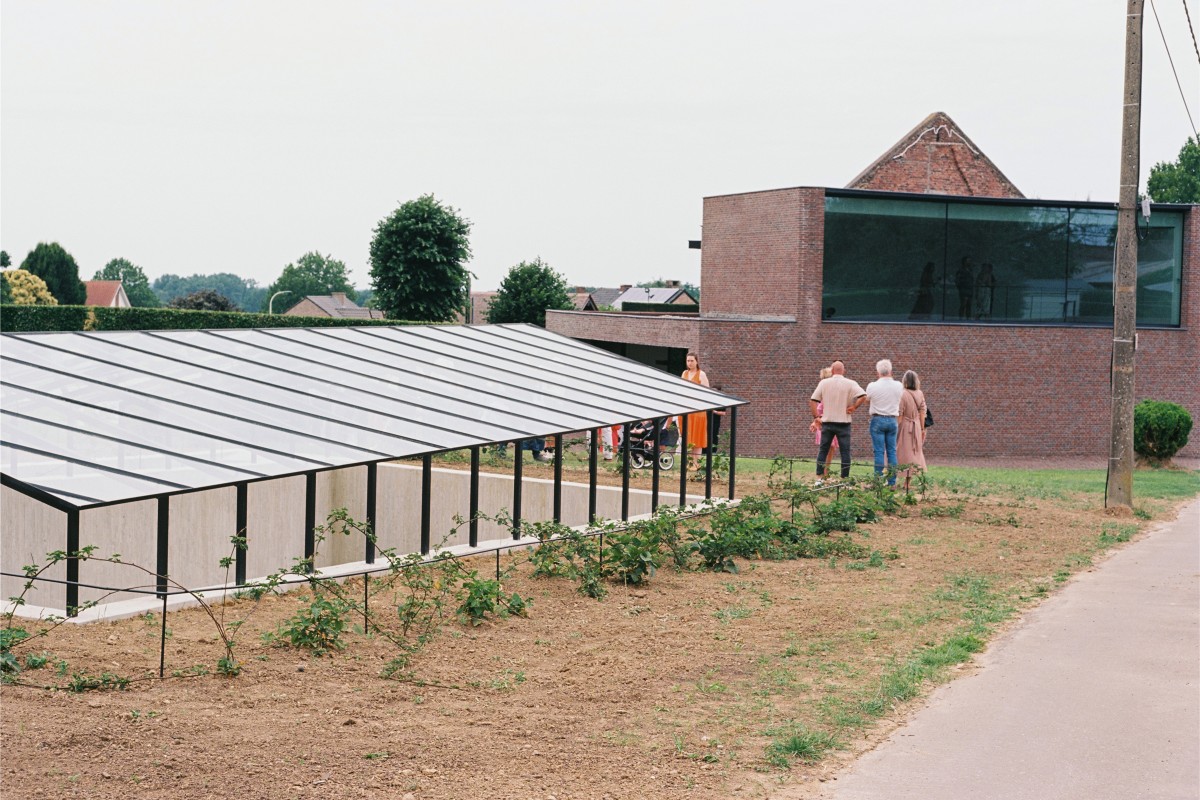RE SET HASPENGOUW
Re Set Haspengouw: A Constellation
Re Set Haspengouw is at once a hard reset and a soft reset. It suggests a new beginning, a new mindset, and, at the same time, an act of adjusting, a rearrangement of given circumstances, conditions, and structures. Its attempt to integrate artistic practices and discourses into the agricultural, rural setting of Limburg blurs the distinction between organic and inorganic, natural and cultural, landscape and architecture. The construction and positioning of the Greenhouse, for example, can be described in terms of planting, seeding, and sowing. Built into the ground, beneath ground level, it implies a prospect of growth and sprouting. Its transparent roof, mildly tilted upward, slightly juts out while remaining close to the earth, incorporating solar energy into its underground space by letting sunlight in. The Greenhouse is a void, an open geometric negative hole, a high-end trench that distantly echoes Michael Heizer’s 1969 work of land art, Double Negative, or Robert Smithson’s 1970 Partially Buried Woodshed, as it brings to mind the image of an uncovered bunker. It was built as a meeting place for discussions and interviews about contemporary art, an isolated yet connected bubble for artists, writers, and thinkers to gather and participate in an endeavor to expand contemporary art’s stock of references and fields of knowledge, outside the confinements, restrictions and predispositions of the urbanscape.
In the Greenhouse, exchange of ideas and personal encounters become like an event of germination, a botanical growth, transcending the difference between nature and culture, the actual and the symbolic, praxis and theory. Pivoted towards the undermining of oppositions, the Greenhouse unites those who are on the ground with those who are underground, rendering dichotomies of active participants and passive observers invalid.
Similarly to how it treats cultural and discursive elements within biological parameters, Re Set Haspengouw also embeds biological motifs within sculptural architectural appearances, manifested, among other things, in the motif of the berries welded onto the door of the designated Artist’s Studio, the second out of three members upon which Re Set Haspengouw relies. The Artist’s Studio is both a site of production and a site of presentation (depending on the artist’s wishes). Its shifting potential between purposes and statuses is amplified by the fact that it borders on Gert Robijns grandparents’ house, which he sealed off and dislocated ten centimeters from where it was originally placed (Re Set Home (2015)). In light of this, Re Set Haspengouw not only circulates through different buildings, functions, and categories, it also circulates through different times, juxtaposing the characteristics of an envisioned proposition with those of a memorial. Furthermore, Re Set Haspengouw continues Robijns’ effort to redefine the reciprocal relations between the public sphere and the realm of the private, stretching back to his 2011 outdoor installation Het Dorp (The Village), where he duplicated the church and the house adjacent to it of his hometown Gotem, repositioning them outside the military airport in Burstem, just a short distance away. The sculptural architectural mock-ups were built sealed off with a white colorless façade emanating in space as a fossilized replica, a physical apparition from a different time, a recollected memory. To some extent, Re Set Haspengouw develops the conceptual effort sown in Het Dorp, i.e., to dedifferentiate ‘here’ and ‘there’, ‘now’ and ‘then’, and to establish a constellation circulating through various places, times, and functions.
In addition to the Greenhouse and the Artist’s Studio, the third member of Re Set Haspengouw is the Artist’s Residency, the designated living space offered to artists to create and internalize the rural surroundings. The circulation through the different structures is parallel to the circulation between the three of them and the village they are located in, between the village and the surrounding villages, and between the rural area and the places and locations of the artists Robijns collaborates and will collaborate with in the context of Re Set Haspengouw, e.g., Japan (Yutaka Sone), Italy (Massimo Bartolini), and The Netherlands (René Daniels) . All of this amounts to sort of constellation, a configuration of points, activities, and narratives in time and space, which run through one another and lay Re Set Haspengouw in constant motion, constant alertness, sharpening our awareness and broadening the conceptual and referential horizon of contemporary art. The horizon Re Set Haspengouw opens up and is being opened up to enhances the social and discursive aspects of art, without falling into the trap of mere activism and dematerialization.
Ory Dessau
LOCATIE
Sint-Truidersteenweg 137
3840 Tongeren-Borgloon
BOUWHEER Gert Robijns
SAMENWERKING Gert Robijns

